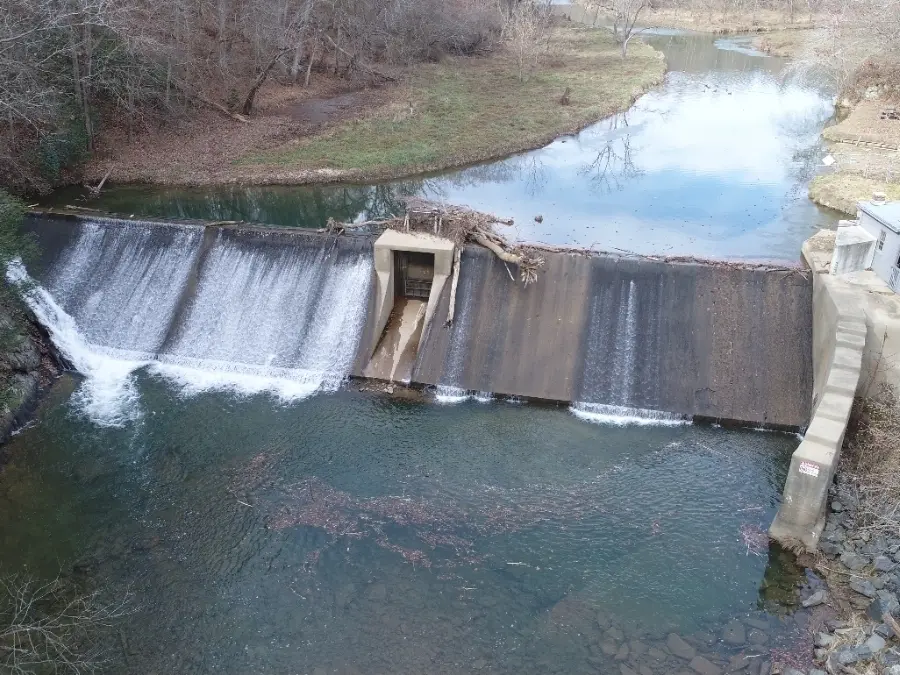
An eel ladder installed at the Eden Mill Dam is designed to help bolster the American eel’s population in Deer Creek.
HARFORD COUNTY, MD — As part of work being done at the Eden Mill Dam this month, an eel ladder has been installed to help increase the American eel population in Deer Creek beyond the dam.
According to the Harford County Parks and Recreation Department, American eels “play an important role in the ecosystem and will lead to improved water quality above and below the dam.” Essentially, the ladder helps the eels navigate up and over the dam so they can continue swimming.
Jim Thompson with the Maryland Department of Natural Resources told Patch that eels are common throughout the Bay watershed.
“In fact, Deer Creek has some of the highest abundances of eels in Maryland. This could be in part because as the eels migrate up from the ocean, they are drawn to the Susquehanna River but are blocked by the Conowingo Dam (Conowingo Dam also has an eel ladder now though) and seek habitat in the rivers that feed into the Susquehanna below Conowingo Dam – Deer Creek on the western side and Octoraro Creek on the eastern side,” Thompson told Patch.
The ladder essentially is a covered metal gutter filled with running water with a substrate that eels can grab ahold of and climb up the eel ladder. There’s running water on the other side that helps the eels slide down where they land in a bag and are then taken by Maryland DNR employees who help relocate the juvenile eels further upstream.
In just one year, the eel ladder on Daniels Dan captured more than 30,000 eels. The ladder at Conowingo Dam passed more than 500,000 eels. All eels captured with this ladder at the Eden Mill Dam will be released after being counted, although a few may be saved for education and outreach, or additional studying, Thompson said.
American eels carry baby mussels that clean the water and improve ecosystem health. Larval mussels attach to the gills of eels and other fish and receive a ride upstream, where they drop and burrow into the substrate to spend their lives filtering material from the water. Dispersal of the mussels is dependent on the movement of the host fish. The mussels, in turn, help improve water quality by retaining, removing and recycling nutrients and sediment before it enters the Chesapeake Bay. Each mussel filters more than 10 gallons of water per day
While the eels may catch a swimmer or kayaker off guard if they’re spied in the water, Thompson said they are “totally harmless.”
“Eels, like any other fish, could be leery of people but there is no reason for people to fear them. They may look scary and yucky – but are totally harmless,” he told Patch. “It’s unlikely you’ll see American eels while playing in the river. Eels are most often seen when they are caught incidentally by fishermen. If you are lucky enough to see one while swimming, just observe it from a distance and remember that the eel you are seeing has traveled thousands of miles from the Sargasso Sea in the Atlantic Ocean just to be here.”
Migrating, young American eels (Anguilla rostrata) have been captured and taken upstream annually from Conowingo Dam since 2007 under an operation made possible through the U.S. Fish and Wildlife Service, the Maryland Department of Natural Resources and Exelon.
Additional work being done at the dam this month includes the removal of storm debris from the top of the dam and the opening of the sluice gates to help lower the water level upstream. At this time, one of the sluice gates will be removed for repairs and a debris deflector and actuators will be installed. Repairs will also be made to the concrete on the face of the dam.



